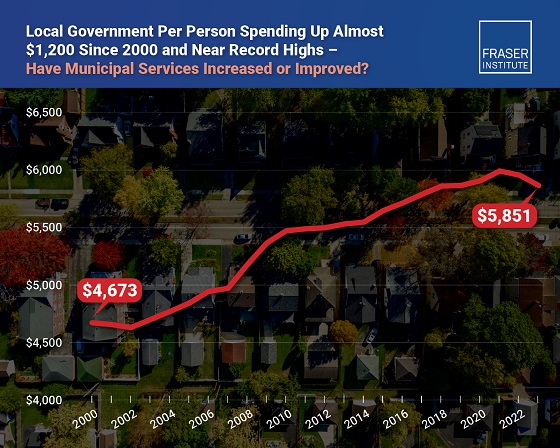Break The Needle
Canada-US border mayors react to new border security initiative

US President Donald Trump has linked his threat to impose 25-per-cent tariffs on Canadian goods to Canada’s failure to address drug trafficking and illegal migration at the Canada-US border.
Ontario has responded with a border security initiative, Operation Deterrence, which is drawing tepid support from Ontario mayors of border communities.
“Absence of leadership from Ottawa has created this [scenario] where the provinces are all going in to be Captain, or Miss Captain, Canada,” said Mike Bradley, the mayor of Sarnia, Ont., a city of 75,000 that sits on the Ontario-Michigan border.
“[But] anything that helps on the policing side to deal with the black plague of fentanyl is welcome,” Bradley said.
Operation Deterrence
On Dec. 6, Ontario redeployed 200 Ontario Provincial Police officers to unpoliced border areas near the 14 official Ontario-US border crossings, which are staffed by the Canada Border Services Agency.
Officers are using aircraft, drones, boats, off-road vehicles and foot patrols to “deter, detect and disrupt” the illegal trafficking of drugs, guns and people, a Jan. 7 provincial press release says.
Premier Ford’s office and Ontario Solicitor General Michael Kerzner declined to provide further details about the operation in response to requests for comment.
But a spokesperson for the Ontario RCMP said there is little evidence that fentanyl trafficking is a significant issue at the Canada-US border.
“There is limited to no evidence or data from law enforcement agencies in the U.S. or Canada to support the claim that Canadian-produced fentanyl is an increasing threat to the U.S.,” the spokesperson told Canadian Affairs in an emailed statement.
The spokesperson highlighted that fentanyl trafficking frequently occurs by mail, rather than at physical border crossings.
“Reports state fentanyl produced in Canada is being exported in micro shipments, most often through the mail. Micro traffickers are most often found on the dark web,” the spokesperson said.
As Canadian Affairs reported last week, seizures of fentanyl at the Canada-US border remain relatively low. But Canadian authorities have seized significant volumes of precursor chemicals used in the production of fentanyl, and key sources say Canada is a major player in the global fentanyl trade.
Data also show illegal migration is a concern along the Canada-US border.
The U.S. Customs and Border Protection reported nearly 200,000 cases of individuals in Canada trying to illegally enter the US in the 2024 fiscal year.
Canada Border Services Agency data indicate just under 5,000 individuals were detained trying to enter Canada from the US in 2023-24.
Borderlands
Jim Diodati, the mayor of Niagara Falls, says he is supportive of Ontario launching Operation Deterrence in response to Trump’s tariff threats.
“I’m glad at least we’re reacting,” he said. “The concerns, of course, are that things are slipping through the cracks … both for drugs, guns and human smuggling as well.”
But Diodati stressed that border concerns go both ways. He hopes Operation Deterrence will also address firearms trafficking from the US into Canada.
“Ninety percent of illegal guns that come into Canada come from the US side, across our borders,” he said.
Diodati blames Ottawa for underfunding the Canada Border Services Agency, the federal agency responsible for border security and immigration enforcement. “CBSA needs more resources,” he said.
“The US sees our border as porous, not as secure as theirs, and now, with the incoming president, they’re looking to punish us over it.”
Bev Hand is the mayor of Point Edward, a 2,500-person village located a short drive north of Sarnia, on the southern tip of Lake Huron. The community connects to Port Huron, Mich., by the Blue Water Bridge, a key Canada-US border crossing.
Hand expressed cautious support for Operation Deterrence’s aims of addressing drug trafficking.
She noted that, since 2019, there have been 16 major drug busts at the Point Edward border, including two significant cocaine seizures by U.S. Customs and Border Protection. In December 2023, US authorities found nearly 500 kg of cocaine in a truck entering the US. In August 2024, US authorities discovered over 120 kg of cocaine hidden in the wall of a truck bound for Canada.
“Fifteen of the seizures were in transport trucks,” she said. “This represents millions of dollars in illegal drugs, and we don’t know what wasn’t captured.”
Hand noted, however, that funds allocated to border security might be better spent on addressing the root causes of drug trafficking, such as addiction.
In December, Ottawa announced it would spend an additional $1.3 billion over six years on enhancing its border security. Ontario has not disclosed how much Operation Deterrence will cost.
Like Diodati, Hand also emphasized the role Operation Deterrence could play in helping to curb firearms trafficking from the US.
She referenced a May 2022 case where a resident discovered a bag with 11 handguns in a tree near Port Lambton, Ont., a city approximately 15 kilometres south of Point Edward.
“The package had fallen from a drone that is assumed to have come from the US side,” she said.
Our content is always free. Subscribe to get BTN’s latest news and analysis, or donate to our journalism fund.
‘Fentanyl Czar’
Bradley, Sarnia’s mayor, said border security initiatives must be balanced against the need to facilitate trade, particularly at critical crossings like the CN Rail tunnel — which runs beneath the St. Clair River and connects Canada to Michigan — and Blue Water Bridge.
“We want security, but you also want trade, and that’s the balance right now that we’re struggling with,” Bradley said.
A 13-year review by professors at Carleton University found that tighter Canada-US border security following the 9/11 attacks increased inspection times and delays at the border. This has “negatively impacted” bilateral trade and cost the Canadian economy billions in foregone economic opportunities and productivity.
Diodati, of Niagara Falls, said he would prefer to see Canada and the US take a bilateral approach to border security that focuses on bolstering security around the continent.
“We want to take a perimeter approach around North America, rather than the borders between us,” he said.
While diplomatic relations between Canada and the US are tense, further collaboration on border security may be on the horizon.
On Feb. 3, Trump paused the imposition of tariffs on Canada after Canadian Prime Minister Justin Trudeau promised Canada would send nearly 10,000 frontline personnel to protect the border.
“Canada is making new commitments to appoint a Fentanyl Czar, we will list cartels as terrorists, ensure 24/7 eyes on the border, launch a Canada-U.S. Joint Strike Force to combat organized crime, fentanyl and money laundering,” Trudeau wrote in a post on social media platform X.
“I have also signed a new intelligence directive on organized crime and fentanyl and we will be backing it with $200 million.
“Proposed tariffs will be paused for at least 30 days while we work together.”
This article was produced through the Breaking Needles Fellowship Program, which provided a grant to Canadian Affairs, a digital media outlet, to fund journalism exploring addiction and crime in Canada. Articles produced through the Fellowship are co-published by Break The Needle and Canadian Affairs.
Our content is always free – but if you want to help us commission more high-quality journalism, consider getting a voluntary paid subscription.
Break The Needle
B.C. doubles down on involuntary care despite underinvestment

By Alexandra Keeler
B.C.’s push to replace coercive care with community models never took hold — and experts say province isn’t fixing that problem
Two decades ago, B.C. closed one of the last large mental institutions in the province. The institution, known as Riverview Hospital in Coquitlam, had at its peak housed nearly 5,000 patients across a sprawling campus.
There, patients with mental illnesses were subjected to a range of inhumane treatments, city records show. These included coma therapy, induced seizures, lobotomies and electroshock therapy.
When the province transferred patients out of institutions like Riverview during the 1990s and early 2000s, it promised them access to community-based mental health care instead. But that system never materialized.
“There was not a sustained commitment to seeing [the deinstitutionalization process] through,” said Julian Somers, a professor at Simon Fraser University who specializes in mental health, addiction and homelessness.
“[B.C.] did not put forward a clear vision of what we were trying to achieve and how we were going to get there. So we languished.”
Today, amid a sharp rise in involuntary hospitalizations, experts say B.C. risks repeating the mistakes of the past. The province is using coercive forms of care to treat individuals with mental health and substance use disorders, while failing to build community supports.
“We’re essentially doing the same thing we did with institutions,” said Somers, who began his clinical career at Riverview Hospital in the 1980s.
“[We’re] creating a system that doesn’t actually help people and may make things worse.”
Riverview’s legacy
B.C.’s push for deinstitutionalization was driven by growing evidence that large psychiatric institutions were harmful, and that community-based care was more humane and cost effective.
Nationally, advances in antipsychotic medication, rising civil rights concerns and growing financial pressures were also spurring a shift away from institutional care.
A 2006 Senate report showed community care could match institutional care in both effectiveness and cost — provided it was properly funded.
“There was sufficient evidence demonstrating that people with severe mental illness had better outcomes in community settings,” said Somers.
Somers says people who stay long term in institutions can develop “institutionalization syndrome,” characterized by increased dependency, worse mental health outcomes and greater social decline.
At the time, B.C. was restructuring its health system, promising to replace institutions like Riverview with a regional network of mental health services.
The problem was, that network never fully materialized.
Marina Morrow, a professor at York University’s School of Health Policy and Management who tracked B.C.’s deinstitutionalization process, says the province placed patients in alternative care. But these providers were not always well-equipped to manage psychiatric patients.
“Nobody left Riverview directly to the street,” Morrow said. “But some … might have ended up being homeless over time.”
A 2012 study led by Morrow found that older psychiatric Riverview patients who were relocated to remote regional facilities strained overburdened and ill-equipped staff, leading to poor patient outcomes.
Somers says B.C. abandoned its vision of a robust, community-based system.
“We allowed BC Housing to have responsibility for mental health and addiction housing,” he said. “And no one explained to BC Housing how they ought to best fulfill that responsibility.”
Somers says the province’s reliance on group housing was part of the problem. Group housing isolates residents from broader society, instead of integrating them into a community. A 2013 study by Somers shows people tend to have better outcomes if they get to live in “scattered-site housing,” where tenants live in diverse neighbourhoods while still receiving personalized support.
“All of us … are influenced substantially by where we live, what we do, and who we do things with,” he said.
Somers says a greater investment in community care would have emphasized better housing, nutrition, education, work and social connection. “Those are all way more important than medical care in terms of the health of the population,” he said.
“We closed institutions having no [alternative] functioning model.”
Reinstitutionalization
Despite B.C.’s efforts to deinstitutionalize, the practice of institutionalizing certain patients never truly went away.
“We institutionalize way more people now than we ever did, even at peak Riverview population,” said Laura Johnston, legal director at Health Justice, a B.C. non-profit focused on coercive health laws.
Between 2008 and 2018, involuntary hospitalizations rose nearly 66 per cent, while voluntary admissions remained flat.
In the 2023-24 fiscal year, more than 25,000 individuals were involuntarily hospitalized at acute care facilities, down only slightly from 26,600 the previous year, according to B.C.’s health ministry. These admissions involved about 18,000 unique patients, indicating many individuals were detained more than once.
Subscribe for free to get Break The Needle’s latest news and analysis – or donate to our investigative journalism fund.
In September 2024, a string of high-profile attacks in Vancouver by individuals with histories of mental illness reignited public calls to reopen Riverview Hospital.
That month, B.C. Premier David Eby pledged to further expand involuntary care. Currently, B.C. has 75 designated facilities that can hold individuals admitted under the Mental Health Act. The act permits individuals to be involuntarily detained if they have a mental disorder requiring treatment and are significantly impaired. These existing facilities host about 2,000 beds for involuntary patients.
Eby’s pledge was to add another 400 hospital-based mental health beds, and two new secure care facilities within correctional facilities.
Johnston, of Health Justice, says Eby’s announcement merely continues the same flawed approach. It “[ties] access to services with detention and an involuntary care approach, rather than investing in the voluntary, community-based services that we’re so sorely lacking in B.C.”
Kathryn Embacher, provincial executive director of adult mental health and substance use with BC Mental Health & Substance Use Services, says additional resources are needed to support those with complex needs.
“We continue to work with the provincial government to increase the services we are providing,” Embacher said. “Having enough resources to serve the most seriously ill clients is important to provide access to all clients.”
 |
θəqiʔ ɫəwʔənəq leləm’ (the Red Fish Healing Centre for Mental Health and Addiction) is for clients with complex and concurrent mental health and substance use disorders. | BC Mental Health and Substance Use Services website
Inertia
If B.C. wants to avoid repeating the mistakes of its past, it needs to change its approach, sources say.
One concern Johnston has is with Section 32 of the Mental Health Act. Largely unchanged since 1964, it grants broad powers to medical professionals to detain and control patients.
“It grants unchecked authority,” she said.
Data obtained by Health Justice show one in four involuntarily detained patients in B.C. is subjected to seclusion or restraint. And even this figure may understate the problem. B.C. only began reliably tracking its seclusion and restraint practices in 2020, and only collects data on the first three days of detention.
A B.C. health ministry spokesperson told Canadian Affairs that involuntary care is sometimes necessary when individuals in crisis pose a risk to themselves or others.
“It’s in these situations where a patient, who meets very specific criteria, may need to be held involuntarily under the Mental Health Act,” the spokesperson said.
But York University professor Morrow says those “specific criteria” are applied far too broadly. “We have this huge hammer [involuntary care] that sees everything as a nail,” she said. “Involuntary treatment was meant for rare, extreme cases. But that’s not how it’s being used today.”
Morrow advocates for reviving interdisciplinary care that brings psychiatry, psychology and primary care together in community-based settings. She pointed to several promising models, including Toronto’s Gerstein Crisis Centre, which provides community-based crisis services for those with mental health and substance use issues.
Somers sees Alberta’s recovery-oriented model as a potential blueprint. This model prioritizes live-in recovery communities that combine therapeutic support with job training and stable housing, and which permit residents to stay up to one year. Alberta has committed to building 11 such communities across the province.
“They provide people with respite,” Somers said.
“They provide them with the opportunity to practice and gain confidence, waking up each day, going through each day without drugs, seeing other people do it, gaining confidence that they themselves can do it.”
Johnston advocates for safeguards on involuntary treatment.
“There’s nothing in our laws that compels the health system to ensure that they’re offering community-based or voluntary based services wherever possible, and that they are not using involuntary care approaches without exhausting other options,” she said.
“There’s inertia in a system that’s operated this way for so long.”
This article was produced through the Breaking Needles Fellowship Program, which provided a grant to Canadian Affairs, a digital media outlet, to fund journalism exploring addiction and crime in Canada. Articles produced through the Fellowship are co-published by Break The Needle and Canadian Affairs.
Subscribe to Break The Needle.
Our content is always free – but if you want to help us commission more high-quality journalism,
consider getting a voluntary paid subscription.
Addictions
Man jailed for trafficking diverted safer supply drugs, sparking fresh debate over B.C. drug policies

Nanaimo drug trafficker’s case is further evidence of safer supply diversion. But some sources say even diverted drugs reduce harm
In early May, 68-year-old Ronald Schilling of Nanaimo, B.C., was sentenced to three years in prison for trafficking street drugs such as fentanyl and meth — as well as government-supplied opioids.
When authorities had arrested Schilling two years earlier, they had found him in possession of more than 80 government-supplied opioid pill bottles labeled with other patients’ names.
Those pills had been dispensed to patients under B.C.’s “prescribed alternatives” program, more commonly known as safer supply. The program aims to reduce overdose deaths by dispensing pharmaceutical opioids to drug users as an alternative to toxic street drugs.
In Schilling, patients of this program had found a drug dealer who was willing to give them harder drugs — such as fentanyl — in exchange for their prescription opioids. Schilling would in turn sell their prescription opioids to others.
“Mr. Schilling preyed upon people who were taking the safe supply drug,” Provincial Court Judge Karen Whonnock said during the sentencing hearing.
Schilling’s case is further evidence that safer supply opioids are making their way to the streets — and having unintended negative consequences. However, some sources say even diverted pills reduce harm if they flood the market with safer drugs.
‘Upside Down’
Schilling, a former charity worker, developed a cocaine addiction after the sudden death of his partner. He ultimately turned to drug trafficking to fund his addiction, according to his lawyer.
In court, the prosecution described Schilling as operating a mid-level drug trafficking scheme that exploited B.C.’s safer supply program.
Schilling coordinated with multiple dealers to source both illicit and prescription drugs, and had at least three individuals working under him. His text messages showed he would arrange to meet clients near Nanaimo’s Outreach Pharmacy to trade potent street drugs for the prescribed medications they had just received.
He operated under the name “Upside Down Inc.” — “down” being a street reference to fentanyl — and had business cards to match. To reassure users that the street drugs were safe, he would have them tested at a local overdose prevention site.
‘Predatory behaviour’
While Schilling’s case is unusual, it adds to the growing body of evidence that provincial safer supply programs are not always being used as intended.
In one example, a B.C. government report released in February revealed that more than 60 pharmacies were involved in a kick-back scheme, offering patients cash or rewards to fill safer supply prescriptions they did not need. Some of those drugs were then sold on the black market.
Collen Middleton, a co-founder of the Nanaimo Area Public Safety Association, refers to safer supply drugs as the “perfect consumer product.”
“They are a product that produces its own demand, because it’s addictive,” said Middleton, whose neighbourhood association is a vocal critic of safer supply.
One of Middleton’s concerns is that safer supply drugs are presented as safe, despite being addictive themselves. He says this makes them an effective gateway to more dangerous street drugs like fentanyl.
“Those drugs are being marketed as safe to kids … [so] you’re bringing more people into using addictive drugs, more abuse, more predatory behaviour toward a vulnerable segment of the population,” he said.
The B.C. Ministry of Health told Canadian Affairs in an emailed statement that it takes the “diversion of prescription medications … very seriously.”
“The unauthorized distribution is illegal and puts the public at risk,” it said.
In response to the B.C. pharmacy scandal, the province tightened its protocols for dispensing prescription opioids. All new and most existing patients must take prescription opioids under the supervision of health-care professionals, a protocol known as witnessed dosing. In rare cases, existing clients may continue to take their doses offsite if the prescriber views the risk of diversion as low.
Mixed evidence
In its statement to Canadian Affairs, B.C.’s health ministry also said its safer supply program “plays an important role in reducing substance use-related harms” and can lower overdose risk by as much as 91 per cent.
This figure comes from a 2024 B.C. study published in the British Medical Journal. That study found individuals prescribed pharmaceutical opioids early in the pandemic were 91 per cent less likely to die from any cause in the week after receiving at least four days of safer supply opioids, compared to a control group.
The study only tracked outcomes during the week following prescription fills. It did not verify whether individuals took the opioids as prescribed.
A study published in April in The Lancet Public Health shows B.C.’s safer supply programs are linked to improved short-term health outcomes, including fewer overdoses and hospital visits.
However, a population-level study in JAMA Health Forum found no significant reduction in overdoses or mortality associated with B.C.’s safer supply and decriminalization policies. It also suggested possible increases in emergency department visits and hospitalizations.
Comprehensive long-term research on the health impacts of Canadian safer supply programs is limited.
Creating a market
Some sources say the diversion of prescription opioids may be less harmful than the alternatives.
“If you could replace [street] drugs with safer pharmaceutical alternatives, people’s needs would be met,” said Perry Kendall, B.C.’s former provincial health officer and a long-time harm reduction advocate.
“They wouldn’t have to turn to the illicit market, and their risk of a toxic drug overdose would be significantly reduced.”
In Kendall’s view, Schilling was in some ways functioning as a harm-reduction worker.
“[Schilling] was kind of offering a harm reduction service, as well as supplying people with the drugs they wanted,” Kendall said.
Kendall’s views are echoed in a 2023 B.C. government review that notes diversion of safer supply drugs to people already at risk of drug poisoning may be beneficial. But the review also acknowledges that diversion to users who would not otherwise use unregulated drugs is harmful.
Still, Kendall acknowledged a fundamental issue: “[Safer supply opioids don’t] really give you the same high [as fentanyl]. So if you can trade [them] to … get what you’re looking for, which is fentanyl, then that’s what you will do.”
Leonard Krog, the mayor of Nanaimo, says it is clear that, within Nanaimo, B.C.’s policies to help drug users are making it easier for dealers to sell their toxic drugs.
“We have a safe injection site next to City Hall, and there’s no question dealers are coming down here and they’re selling their stuff, because the market’s right here,” said Krog.
But Kendall warns that pulling back on decriminalization and safer supply programs creates a dangerous gap.
“The daftest thing you can do is create a market of desperate people and then fail to fill it,” said Kendall. “Somebody’s going to meet those needs — and they’re not going to be law-abiding citizens.”
Krog is unconvinced.
“If we make it easier for the wolves to successfully exploit the sheep, is that a good thing?”
This article was produced through the Breaking Needles Fellowship Program, which provided a grant to Canadian Affairs, a digital media outlet, to fund journalism exploring addiction and crime in Canada. Articles produced through the Fellowship are co-published by Break The Needle and Canadian Affairs.
Subscribe to Break The Needle
-

 Business2 days ago
Business2 days agoOttawa Funded the China Ferry Deal—Then Pretended to Oppose It
-

 COVID-192 days ago
COVID-192 days agoNew Peer-Reviewed Study Affirms COVID Vaccines Reduce Fertility
-

 MAiD2 days ago
MAiD2 days agoCanada’s euthanasia regime is not health care, but a death machine for the unwanted
-

 Business1 day ago
Business1 day agoWorld Economic Forum Aims to Repair Relations with Schwab
-

 Alberta2 days ago
Alberta2 days agoThe permanent CO2 storage site at the end of the Alberta Carbon Trunk Line is just getting started
-

 Alberta1 day ago
Alberta1 day agoAlberta’s government is investing $5 million to help launch the world’s first direct air capture centre at Innisfail
-

 Business2 days ago
Business2 days agoMunicipal government per-person spending in Canada hit near record levels
-

 Business1 day ago
Business1 day agoA new federal bureaucracy will not deliver the affordable housing Canadians need








